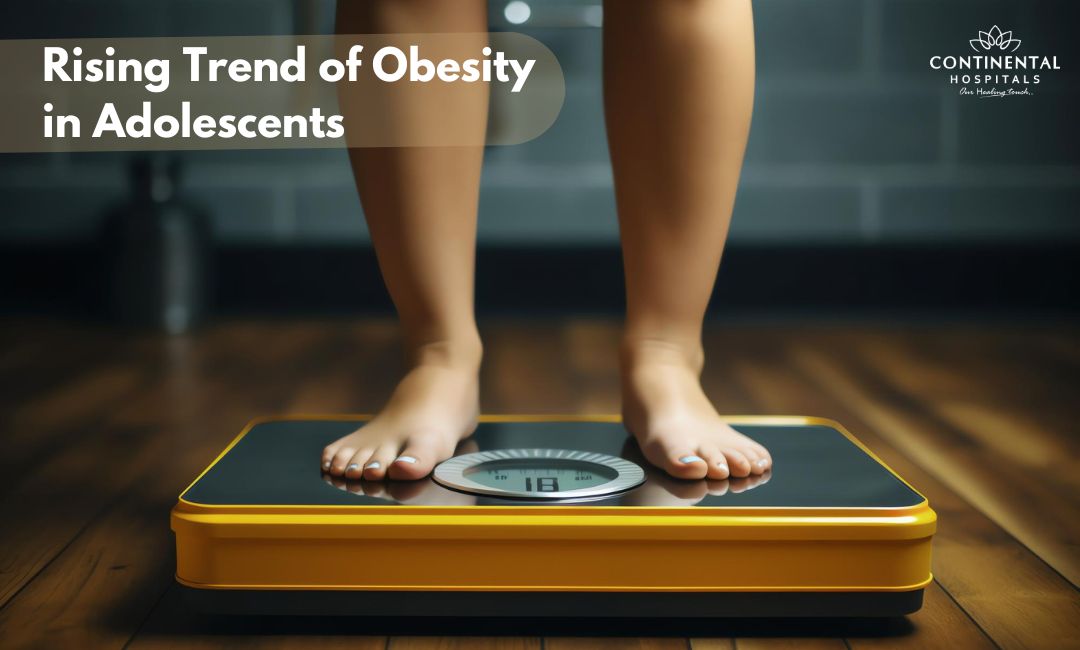Obesity in adolescents is a growing global concern. With the increasing availability of unhealthy foods, sedentary lifestyles, and the influence of digital entertainment, more young people are struggling with weight problems than ever before. This blog will explore the prevalence and trends of adolescent obesity, its associated health risks, and actionable steps that can help curb this worrying trend.
Prevalence and Trends of Adolescent Obesity
Over the past few decades, obesity rates among adolescents have skyrocketed across the globe. According to the World Health Organization (WHO), the number of overweight or obese adolescents has dramatically increased since the 1980s. In some countries, nearly one in five adolescents is obese. This surge is especially noticeable in urban areas where access to processed foods and sugary beverages is more widespread.
In India, a similar upward trend can be seen. A study published in the Indian Journal of Medical Research reported that the prevalence of adolescent obesity in India is around 8–10%. While this may seem lower than rates in Western countries, the pace at which obesity is rising among Indian adolescents is alarming. Changes in diet patterns, increased consumption of fast food, and reduced physical activity are major contributors to this rising trend.
Factors Contributing to Adolescent Obesity
Several factors are driving the increase in obesity among adolescents:
1. Dietary Habits
One of the most significant contributors to adolescent obesity is poor dietary choices. Fast food, sugary snacks, and soft drinks have become staples in many teenagers’ diets. These foods are high in calories, sugar, and unhealthy fats but low in essential nutrients. This energy-dense but nutrient-poor diet leads to excess weight gain over time.
2. Sedentary Lifestyles
The rise of screen time—be it from smartphones, video games, or television—has led to a decline in physical activity among adolescents. Many young people spend hours sitting in front of screens, reducing the time they spend playing sports or engaging in outdoor activities.
3. Genetics
Genetics also play a role in obesity. Adolescents with a family history of obesity are more likely to struggle with their weight. However, while genetics can increase the likelihood of becoming obese, it is often the environmental and lifestyle factors that trigger weight gain.
4. Psychological Factors
Stress, anxiety, and depression can contribute to weight gain in adolescents. Many young people turn to food as a way of coping with emotional distress, leading to overeating and unhealthy weight gain. This phenomenon, known as emotional eating, can be a significant factor in the development of obesity.
5. Socioeconomic Status
Adolescents from lower-income families are often at greater risk of obesity. In many cases, healthier food options like fresh fruits and vegetables are more expensive than processed foods, leading families to choose cheaper, calorie-dense alternatives. Additionally, low-income neighborhoods may lack access to safe recreational spaces, further limiting opportunities for physical activity.
Health Risks Associated with Adolescent Obesity
Adolescent obesity isn’t just about appearance or self-esteem; it carries severe health risks that can affect a person’s entire life. Some of the key health risks include:
1. Type 2 Diabetes
One of the most alarming consequences of obesity in adolescents is the rise of type 2 diabetes. This form of diabetes, which used to be seen primarily in adults, is now increasingly diagnosed in teenagers. Being overweight or obese makes it difficult for the body to process insulin properly, leading to insulin resistance and eventually type 2 diabetes.
2. Cardiovascular Disease
Obesity in adolescents can lead to high blood pressure, high cholesterol levels, and increased risk of heart disease later in life. Early signs of cardiovascular disease, such as hardened arteries, have been found in overweight adolescents, putting them at risk of heart attacks and strokes in adulthood.
3. Joint and Bone Problems
Excess weight puts additional stress on the skeletal system, which can lead to joint pain and problems with bone development. Adolescents who are obese are more likely to suffer from conditions like osteoarthritis and other orthopedic issues.
4. Respiratory Issues
Obesity can also lead to respiratory problems, such as sleep apnea—a condition in which a person temporarily stops breathing during sleep. This can lead to chronic fatigue and decreased quality of life for adolescents.
5. Mental Health Issues
Obesity can take a toll on mental health as well. Adolescents who are overweight often face bullying and social isolation, which can lead to depression, anxiety, and low self-esteem. The emotional impact of being obese can be just as harmful as the physical health risks.
Strategies to Combat Adolescent Obesity
While the rising trend of adolescent obesity is concerning, there are steps that can be taken to reverse it. Addressing this issue requires a multi-faceted approach involving families, schools, communities, and healthcare professionals. Here are some strategies that can help combat adolescent obesity:
1. Promote Healthy Eating
Encouraging adolescents to make healthier food choices is crucial in combating obesity. Parents and schools can play a significant role by providing balanced meals that are rich in fruits, vegetables, whole grains, and lean proteins. Limiting the availability of sugary snacks and beverages can also make a big difference.
2. Increase Physical Activity
Regular physical activity is essential for maintaining a healthy weight. Schools should ensure that students have access to sports and physical education programs, while parents can encourage outdoor play and activities like walking, cycling, or swimming. Reducing screen time and encouraging movement throughout the day can help adolescents stay active.
3. Involve Families
Parents play a key role in shaping their children’s habits. Families should work together to adopt healthier lifestyles, from eating nutritious meals to exercising regularly. Family activities such as hiking or cooking healthy meals together can help promote a more active and balanced lifestyle for everyone.
4. Address Emotional Health
It’s important to recognize the emotional aspects of obesity. Adolescents struggling with emotional eating or body image issues should be given access to mental health support. Counseling or therapy can help address underlying emotional triggers and teach healthier coping mechanisms.
5. Raise Awareness in Schools
Schools can help raise awareness about obesity and its health risks by incorporating nutrition education into their curricula. Teaching students about healthy eating habits, the dangers of processed foods, and the importance of regular physical activity can empower them to make better choices.
6. Government and Community Support
Governments and communities should also play a role in combating adolescent obesity by implementing policies that promote healthier lifestyles. This could include creating safer spaces for exercise, improving access to affordable healthy foods, and regulating the marketing of junk food to children.
Conclusion
The rising trend of obesity in adolescents is a serious global health issue, with significant short- and long-term health risks. However, through education, support, and lifestyle changes, it is possible to reduce obesity rates and improve the well-being of young people. Families, schools, and communities must work together to encourage healthier habits, making it easier for adolescents to maintain a healthy weight and live longer, happier lives. By taking proactive steps today, we can ensure a healthier future for the next generation.
.webp)














